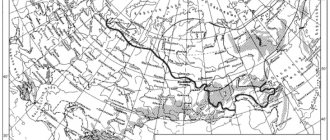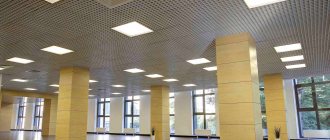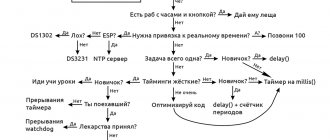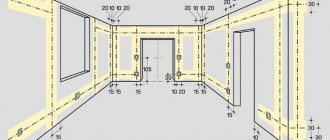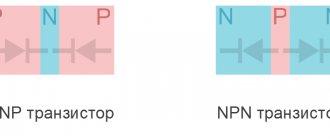01/16/2017 master
In the infrastructure of any city, street lighting plays an important role not only of roads and parks, but also of the local area. It is this lighting that plays an important role in the life of the city to create safe travel conditions.
Lighting of the local area
At the same time, it is local residents who often have questions regarding how correctly their yard lighting was organized and who should monitor it. This and other issues will be discussed in this article.
Why is house lighting necessary?
Creating high-quality lighting in the local area is an important part of the infrastructure of every district of the city. Illumination near the house performs the following tasks, which become necessary with the arrival of evening and night:
- creates sufficient illumination of the roadway, which is located in the courtyard of the house. Thanks to it, all irregularities and features of the road surface, as well as the surrounding area, are clearly visible even at night;
- ensuring good visibility both for vehicles entering parking spaces and for pedestrians who are walking around the yard at this time;
- allows people and vehicles to navigate well in space, which minimizes the risk of injury or accident;
- increases safety in yards, since, according to statistics, robbers do not attack their victims in well-lit areas.
Note! High-quality lighting of the house and the surrounding area can improve the crime situation in the area.
Night yard lighting
But in order for the night lighting of an apartment building and courtyard to perform its assigned functions, it must be organized in a certain way, necessarily based on established standards.
4 Classification
4.1 Categories and classes for lighting of road network objects intended for traffic are established in Table 1.
Note - The classification of road network objects is set in [].
4.2 Classes for lighting of pedestrian spaces are established in Table 2.
Table 1
| Object category | Object class by lighting | Main purpose of the object | Transport characteristics | Design speed, km/h | Number of lanes | Throughput, thousand units/h | |
| A Main roads and streets for general city purposes | Outside the city center* | A1 | Highways, federal and transit routes, main city thoroughfares | All types of transport, continuous movement, intersections at different levels | 100 | 6-8 | St. 10 |
| A2 | Other federal roads and main streets | All types of transport, continuous and regulated movement, intersection with highways at the same or different levels | 80-100 | 6-8 | 7-9 | ||
| Downtown | A3 | Central highways connecting streets with access to class A1 highways | All types of transport, except freight, not related to the service center. Intense pedestrian traffic, regulated traffic, intersection with highways at one level | 90 | 6-8 | 4-7 | |
| A4 | The main historical passages of the center, internal transport connections of the city center | All types of transport, except freight, not related to the service center. Intense pedestrian traffic, regulated traffic, intersection with highways at one level | 80 | 4-6 | 3-5 | ||
| B Highways and district streets | Outside the city center | B1 | Main roads and streets of the city of regional significance | All types of transport, regulated traffic, intersections on the same level | 60-70 | 4-6 | 3-5 |
| Downtown | B2 | All types of transport, except for freight, not related to the service center, traffic is regulated, intersections are on the same level | 60 | 3-6 | 2-5 | ||
| B Local streets | Residential development outside the city center | IN 1 | Transport and pedestrian connections within residential areas and access to highways, except for streets with continuous traffic | Passenger, special and service freight transport, sometimes public passenger transport, regulated traffic, one-level intersections | 60 | 2-4 | 1,5-3 |
| Residential development in the city center | AT 2 | Transport and pedestrian connections in residential areas, access to highways | Passenger, special and service freight transport, controlled traffic, one-level intersections | 60 | 2-4 | 1,5-3 | |
| In urban industrial, municipal and warehouse areas | AT 3 | Transport connections within production and utility storage areas | All types of transport, regulated traffic, intersections on the same level | 60 | 2-4 | 0,5-2 | |
| * City center - the territory of the central part of the city, established by the city authorities. | |||||||
table 2
| Object class by lighting | Object characteristics |
| P1 | Areas in front of the entrances of cultural, sports, entertainment and shopping facilities |
| P2 | The main pedestrian streets of the historical part of the city and the main public centers of administrative districts, impassable and pre-factory squares, landing, children's and recreation areas |
| P3 | Pedestrian streets; main and auxiliary entrances of city parks, sanatoriums, exhibitions and stadiums |
| P4 | Sidewalks separated from the carriageway of roads and streets; main passages of microdistricts, entrances, approaches and central alleys of children's, educational and health care institutions |
| P5 | Secondary driveways and passages in the territories of microdistricts, utility areas in the territories of microdistricts, side alleys and auxiliary entrances of city parks, central alleys of parks of administrative districts |
| P6 | Side alleys and auxiliary entrances of parks of administrative districts |
Courtyard lighting - how to properly illuminate
Any actions that relate to the organization of lighting in a house, on the street or in any public or industrial structure must be based on specific norms, rules and requirements. Many today think that the requirement is relevant only for premises where people do their work or relax. But this is a misconception, since improperly organized street lighting can cause no less harm to people’s lives and health than indoor lighting. All standards that relate to what kind of lighting should be provided for an apartment building and the surrounding area are specified in the regulatory documentation - SNIP. At the same time, a big role here is given to the level of illumination, which must be organized in each specific situation. Below is a table that shows the illumination standards for certain moments of external lighting in the local area.
Standards for illumination of the local area
It is these lighting standards that should be relied upon by organizations involved in the creation of street lighting for houses and the surrounding area.
Note! The illumination standards given in SNIP are advisory in nature and may be slightly modified (but not lower than the established values) when certain parameters change. At the same time, we must strive to ensure that these standards are met as accurately as possible. Indeed, if there is a significant deviation from them, the quality of street lighting will decrease.
At the same time, cities and villages have their own lighting standards, dictated by various parameters and characteristics of the locality. For example, to influence the calculation that will be carried out to calculate the illumination standard for a particular case, it should be based not only on the instructions of SNIP, but also on:
- the area of the house, as well as the territory adjacent to it;
- the number of lighting fixtures that will be included in the outdoor lighting system, as well as their type;
Note! House lighting can be provided by various types of lighting devices: lanterns, spotlights, wall lamps, etc. Moreover, each type of backlight will be characterized by its own technical operating parameters.
House lighting fixtures
- type of light source screwed into street-type lamps. Today, incandescent lamps, on the basis of which illumination standards were calculated for various rooms and areas of the street, are becoming a thing of the past. Instead, LED, halogen and fluorescent light sources are increasingly being used. Each type of light bulb has its own operating parameters (power, etc.), which must be taken into account when making the necessary calculations.
All these manipulations and calculations, which are necessary for high-quality lighting of the house and the surrounding area, must be carried out by qualified specialists and regulated by government agencies responsible for street lighting.
Responsible for light
If the relevant documentation is responsible for the norms and rules for organizing street lighting, then people who work in government agencies are fully responsible for their implementation. In addition to SNIP, documents of federal, regional or local significance may contain standards for illumination levels and various additional recommendations. For example, in the Russian Federation, Federal Law No. 131-FZ of October 6, 2003 (as amended on July 21, 2007) was adopted, which assigns the responsibility of the authorities for the creation of street lighting on the territory of the municipality. According to this law, as well as a number of other legislative documents, local authorities must monitor not only the proper organization of street lighting, but also the maintenance of the system in working order.
Home lighting
In fact, the external lighting of the building area should be monitored by the state housing and communal services service (its individual divisions), as well as divisions of energy companies to implement the technical aspects of street lighting. The territorial administration must pay for their work. Other organizations with which an appropriate agreement has been concluded, or companies whose balance sheet includes the engineering system of a particular settlement, may also be responsible for street lighting of houses and adjacent territories. It is these organizations that determine the following parameters for street lighting in the local area:
- duration of operation of lighting devices at night;
- the number of lights that will be installed near the house and the surrounding area;
- What time will the lights turn on?
Therefore, if for some reason there is no lighting on the street, you need to contact the above-mentioned organizations and companies, which will be different for each individual area of the settlement. Of course, the question “where to go or complain if there is no light in the yard of the house” can be answered in different ways. After all, each division will be responsible only for a certain area of the organization of the street lighting system. For example, the city district administration is responsible for the lighting schedule in the evening and night hours, according to Article 16. But the responsibility for maintaining the lighting system usually rests with the owners of buildings.
2 Normative references
This standard uses normative references to the following standards:
GOST R 55392 Lighting devices and complexes. Terms and Definitions
GOST R 55707 External utilitarian lighting. Methods for measuring standardized parameters
GOST R 55708 External utilitarian lighting. Methods for calculating standardized parameters
Note - When using this standard, it is advisable to check the validity of the reference standards in the public information system on the official website of the Federal Agency for Technical Regulation and Metrology on the Internet or using the annual information index “National Standards”, which was published as of January 1 of the current year, and according to the releases of the monthly information index “National Standards” for the current year. If an undated reference standard is replaced, it is recommended that the current version of that standard be used, taking into account any changes made to that version. If a dated reference standard is replaced, it is recommended to use the version of that standard with the year of approval (adoption) indicated above. If, after the approval of this standard, a change is made to the referenced standard to which a dated reference is made that affects the provision referred to, it is recommended that that provision be applied without regard to that change. If the reference standard is canceled without replacement, then the provision in which a reference to it is given is recommended to be applied in the part that does not affect this reference.
Who receives complaints
If a malfunction of the lighting system of the house and the surrounding area has been noticed (for example, there is no light at night and in the evening, one lamp is faulty, etc.), you must contact the appropriate institution with a complaint or statement.
Proper yard lighting
But, since it is not always clear where to go, you need to contact your housing and communal services department in order to find out more detailed information about those responsible.
Note! Every resident of any locality has the right to know how the budget is spent, what funds are allocated to support street lighting of houses and surrounding areas, and other issues related to such lighting.
To change the situation when there is no light in the yard, you need to do the following manipulations:
- write a written application;
- contact your local executive authority.
After these steps, the organization that accepted the application must take a number of appropriate actions depending on the reason for the submission of the document by a resident of the area:
- send a repair team to find out the cause of a particular situation (no light, various system breakdowns);
- within the time frame specified by the local executive authority, repair work must be carried out to eliminate the identified violations.
If this organization does not carry out the above-described manipulations, then it must answer the following questions:
- who manages lighting maintenance in the specified territory;
- who acts as the customer under the concluded contract for maintenance of the lighting system;
- Which organization is assigned to maintain lighting in a specific location?
This information will allow you to competently and correctly draw up a complaint and submit it to the right organization. If there is no response to the submitted complaint, then it is necessary to submit it to a higher executive body.
Options for organizing courtyard lighting
Today, lighting of the local area can be done in several ways. The first option for organizing courtyard lighting involves placing a wall lamp above the entrance canopy.
Entrance lighting
Any type of lamp, as well as light source (LED, fluorescent, etc.) can be used here. Recently, economical light sources have begun to be used for these purposes, which allow saving energy, which is very important for this type of lighting. This lighting option allows you to illuminate only the area in front of the entrance. Therefore it is rarely used. Usually it comes in combination with other lighting options. The second option for lighting the yard involves placing a wall-mounted street lamp above the canopy at approximately a height of 8.5 meters from ground level.
Second lighting option
In this case, the lamps should be located at an angle of 25 degrees to the horizon. This lighting option provides a much larger area of illumination for the yard, which will cover not only the area in front of the entrance, but part of the roadway. The third option for courtyard lighting. It involves the use of both types of lighting devices described in the previous versions.
Third option for courtyard lighting
In addition, floor lamps are used to illuminate the local area. The distance between them is also regulated by regulatory documents, as are lighting standards. With the help of such lighting devices placed along the road, you can provide high-quality illumination of the roadway, as well as playgrounds and parking lots located in the courtyard of an apartment building.
Yard lighting with lanterns
The most effective way to illuminate the local area is to use both lanterns and lamps placed above the entrance door to the entrance.
What lighting devices can be used on school grounds?
Anti-vandal lamp
We touched upon a little in the previous subparagraphs which lamps are applicable when organizing lighting on school grounds. Here we will dwell on the requirements that they must meet. The choice of lighting devices should also be based on them. Street lamps for illuminating school grounds must meet the following requirements:
- have a high moisture protection class (IP);
- additional anti-vandal protection for effective service in any climatic conditions: strong wind, rain, hail, heat, etc.;
- be made from materials that are resistant to mechanical damage and must be environmentally friendly;
- be easy to use;
- have grounding. This is especially true for lamps installed on supports;
- have a long service life.
At the same time, when choosing lighting fixtures, you should take into account their location (on poles, floor plan, on the facade of the building, etc.). For example, to create functional and decorative lighting, you need to use floor lamp supports of the KO, OP, NP/NF types with a height of 3-5 meters.
